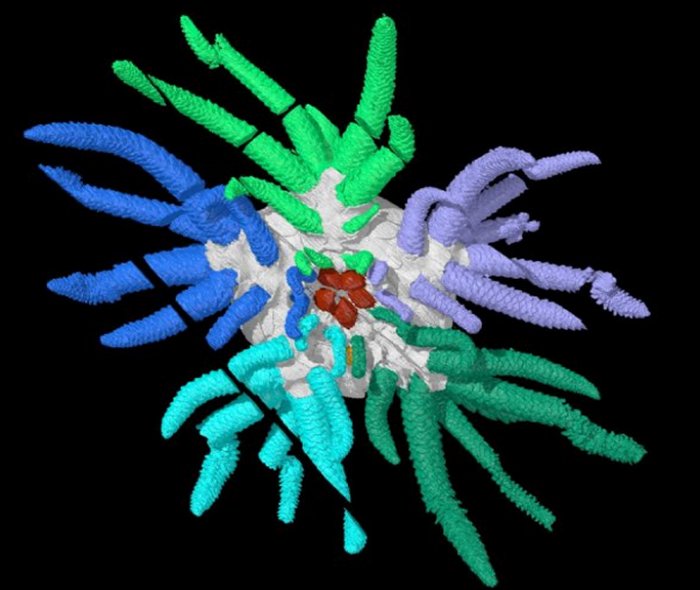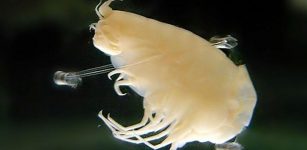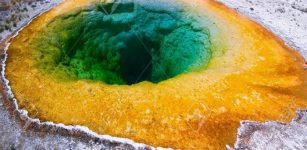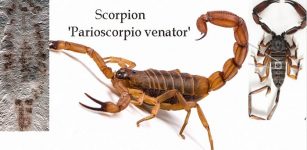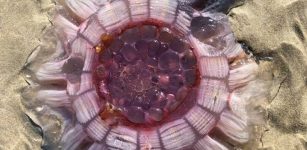‘Cthulhu’ Fossil: Extinct 430-Million-Year-Old Sea Cucumber In 3D Reconstruction
Eddie Gonzales Jr. – MessageToEagle.com – A remarkably well-preserved fossil of extinct 430-million-year-old sea cucumber has been recreated by palaeontologists from the UK and USA .
The animal has been named Sollasina cthulhu due to its resemblance to monsters from the fictional Cthulhu universe created by author H.P. Lovecraft.
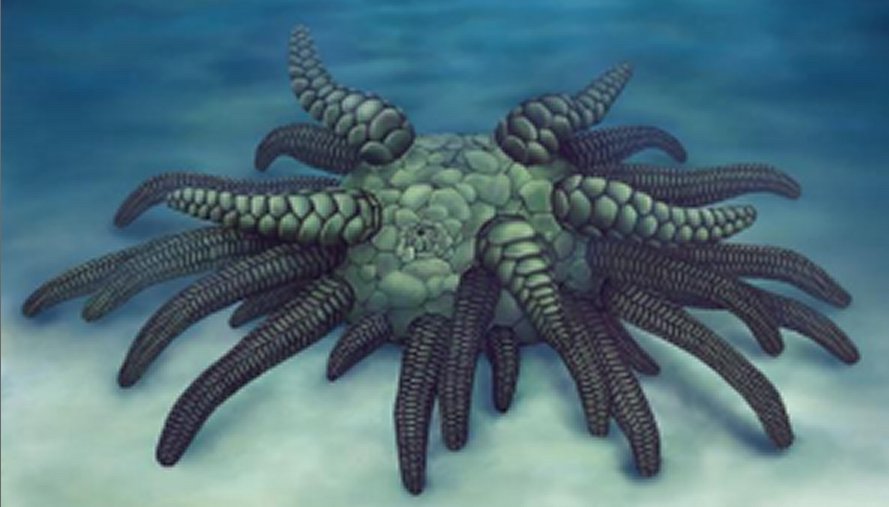 Life reconstruction of Sollasina cthulhu. Credit: Elissa Martin, Yale Peabody Museum of Natural History.
Life reconstruction of Sollasina cthulhu. Credit: Elissa Martin, Yale Peabody Museum of Natural History.
Researchers created an accurate 3D computer reconstruction of this so-called ‘Cthulhu’ creature giving us insight into what the animal looked like. The creature belonged to the family of sea cucumbers, the group that includes the sea pig and its relatives.
Although the fossil is just 3 cm wide, its many long tentacles would have made it appear quite monstrous to other small sea creatures alive at the time. It is thought that these tentacles, or ‘tube feet’, were used to capture food and crawl over the seafloor.
This 3D reconstruction allowed palaeontologists to visualize an internal ring, which they interpreted as part of the water vascular system — the system of fluid-filled canals used for feeding and movement in living sea cucumbers and their relatives.
See also:
Amphibious Whale That Could Both Swim And Walk On Land – Peru Discovery
Secrets Of Extraterrestrial Entity ‘Cthulhu’ Revealed By Scientists
New Species Of 150 Million-Year-Old Crocodile Identified
“Sollasina belongs to an extinct group called the ophiocistioids, and this new material provides the first information on the group’s internal structures,” lead author, Dr Imran Rahman, Deputy Head of Research at Oxford University Museum of Natural History said in a press release.
This includes an inner ring-like form that has never been described in the group before. We interpret this as the first evidence of the soft parts of the water vascular system in ophiocistioids.”
This is a 3D reconstruction of Sollasina cthulhu. Tube feet are shown in different colors.
The new fossil was incorporated into a computerized analysis of the evolutionary relationships of fossil sea cucumbers and sea urchins. The results showed that Sollasina and its relatives are most closely related to sea cucumbers, rather than sea urchins, shedding new light on the evolutionary history of the group.
“We carried out a number of analyses to work out whether Sollasina was more closely related to sea cucumbers or sea urchins,” co-author Dr Jeffrey Thompson, Royal Society Newton International Fellow at University College London, said.
“To our surprise, the results suggest it was an ancient sea cucumber. This helps us understand the changes that occurred during the early evolution of the group, which ultimately gave rise to the slug-like forms we see today.”
The fossil slices and 3D reconstruction are housed at Oxford University Museum of Natural History.
Written by Eddie Gonzales Jr. – MessageToEagle.com Staff Writer

